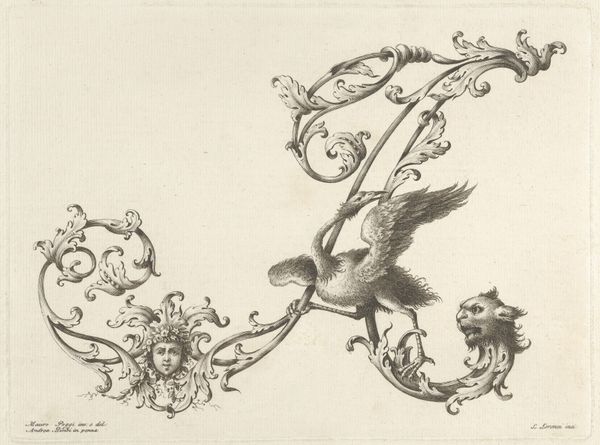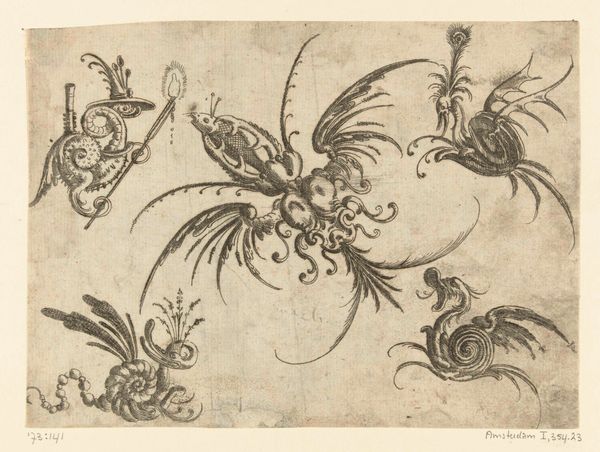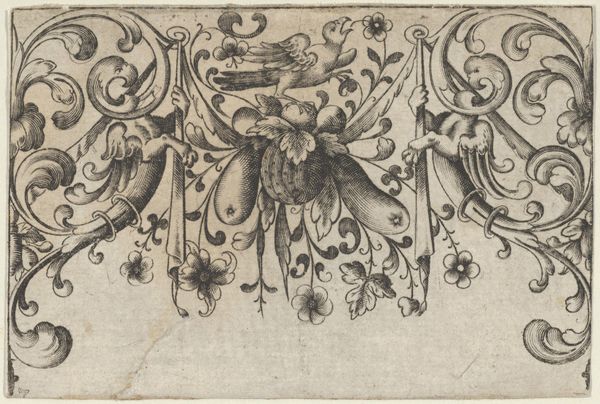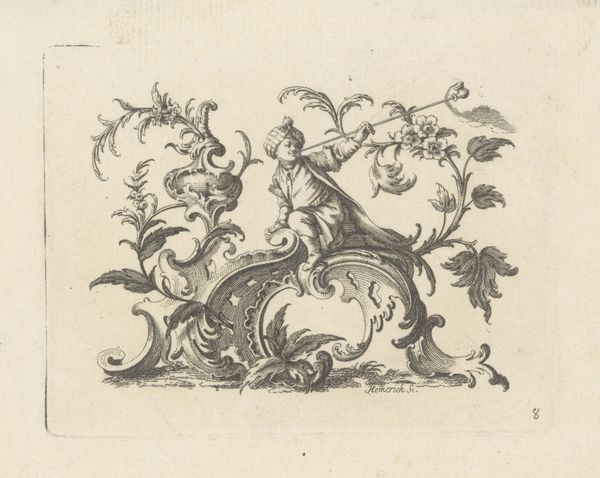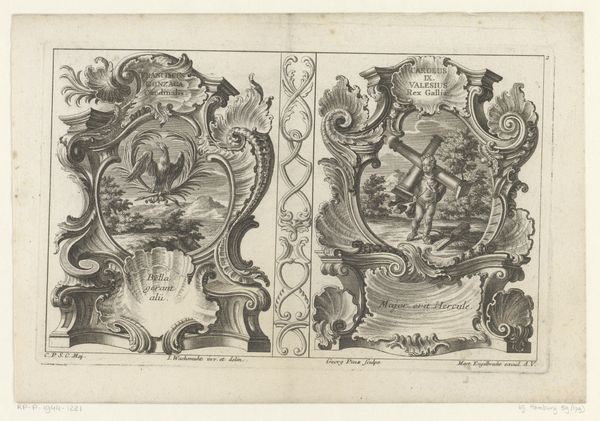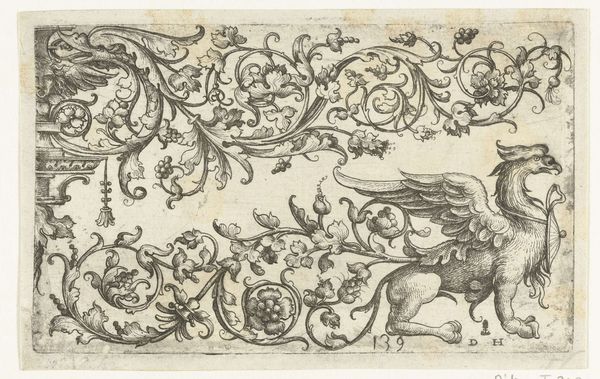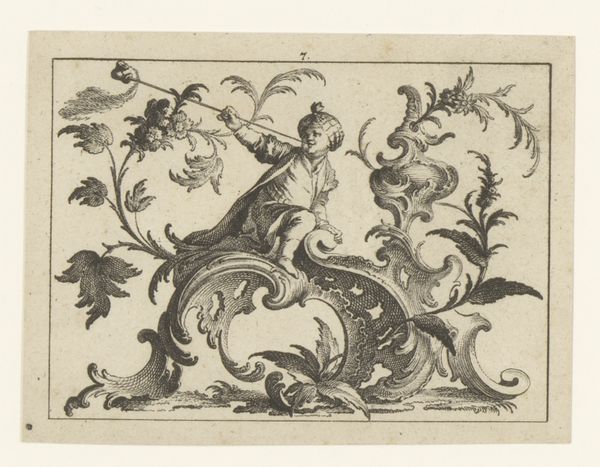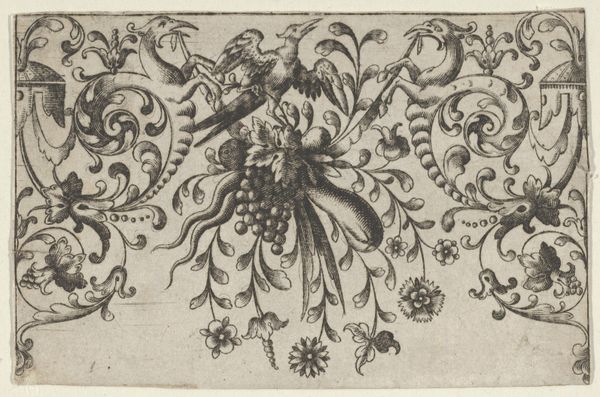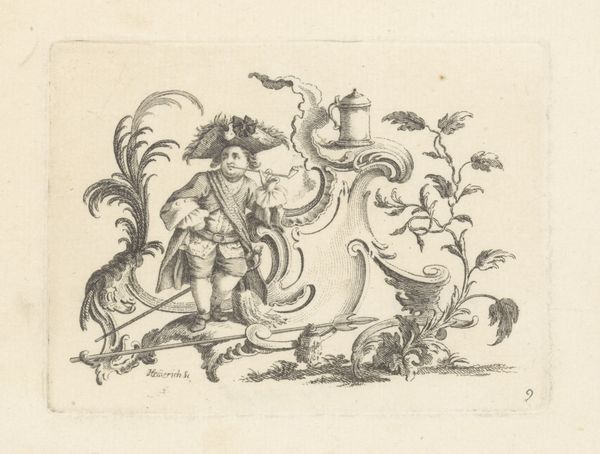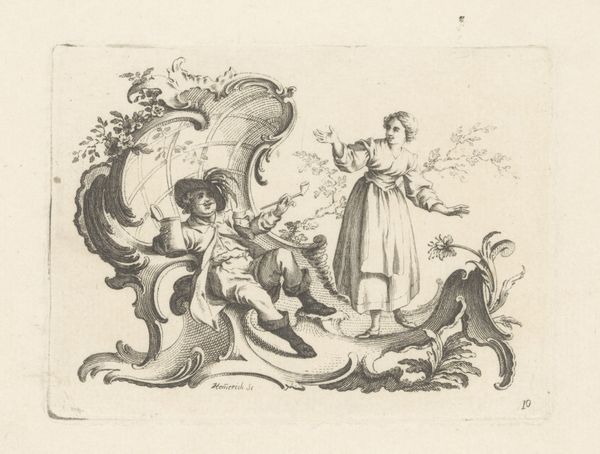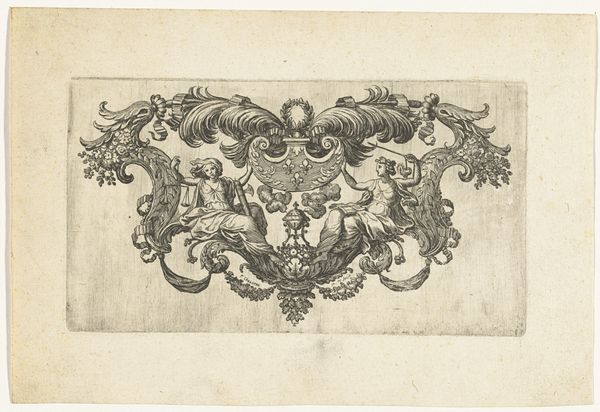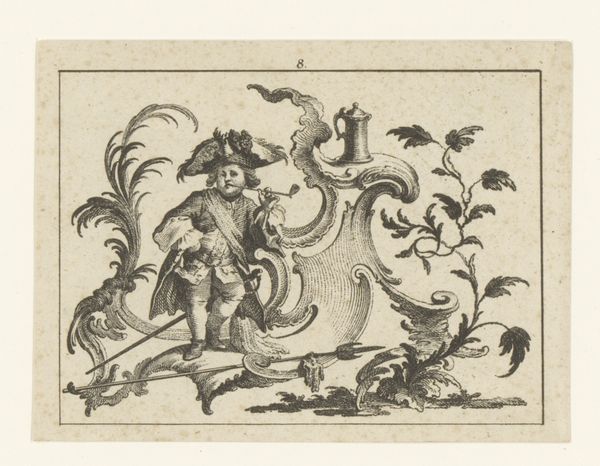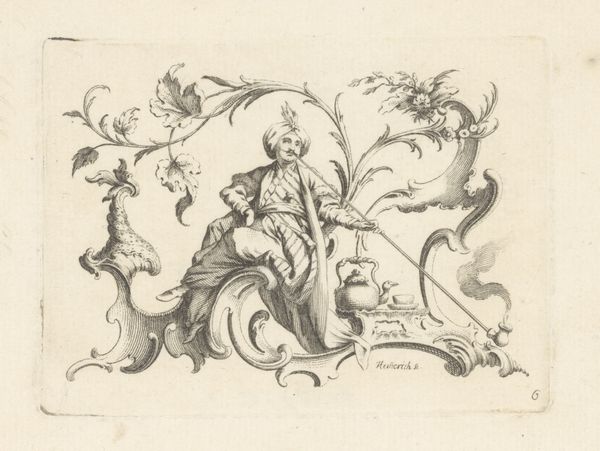
Slutvignet til Lauritz de Thurah's, "Hafnia Hodierna, Eller Udførlig Beskrivelse om den Kongelige Residentz- og Hoved-Stad Kiøbenhavn", 1748 1748
0:00
0:00
print, engraving
#
allegory
#
baroque
# print
#
history-painting
#
decorative-art
#
engraving
Dimensions: 98 mm (height) x 163 mm (width) (bladmaal)
Editor: Here we have Michael Keyl’s 1748 engraving, "Slutvignet til Lauritz de Thurah's, 'Hafnia Hodierna, Eller Udførlig Beskrivelse om den Kongelige Residentz- og Hoved-Stad Kiøbenhavn.'" It’s quite intricate, isn’t it? The cherubs and ornamentation give it a celebratory feel, yet the heraldic shield seems very formal. How do you interpret this work, looking at its internal elements? Curator: Note the bilateral symmetry, how it hinges upon the central, densely ornamented cartouche containing heraldic devices. Each half echoes the other: floral garlands balance the symmetrical deployment of the cherubs on either side. It speaks to the Baroque era fascination with ornate and balanced forms. What function might symmetry serve here? Editor: I suppose the symmetry creates stability, visually grounding the piece. It directs the eye to the center. Curator: Precisely. Now consider the interplay between line and space, light and shadow. Notice how the delicate lines create a sense of depth and texture, particularly in the rendering of the floral elements and the cherubs' wings. How does this affect the overall reading of the work? Editor: It makes the figures feel more three-dimensional despite the print being only two dimensional, adding to the luxurious effect. Curator: Indeed. And that density is important. There's a compositional richness in the close placement of pictorial and ornamental forms that almost threaten to overwhelm. Consider this in the context of printmaking and the challenges of representing volume and depth through line alone. It speaks volumes about Keyl’s skill as a draughtsman. Editor: I see now. Concentrating on form and visual relationships allows us to consider the skill of the artist. I had initially viewed the image as purely decorative, but your breakdown makes me realize its careful design. Curator: Precisely. By attending closely to the compositional choices, we can access an entirely different way to decode the image's visual rhetoric.
Comments
No comments
Be the first to comment and join the conversation on the ultimate creative platform.
